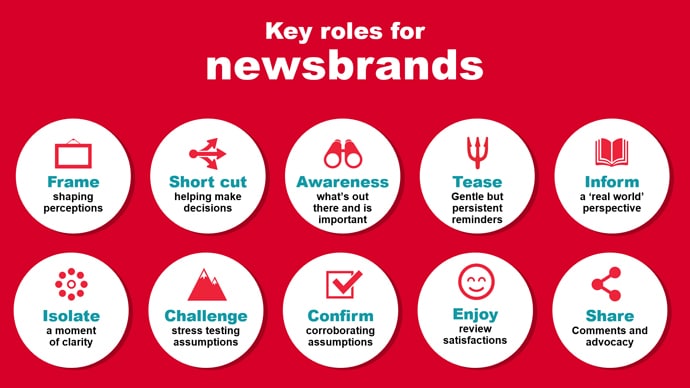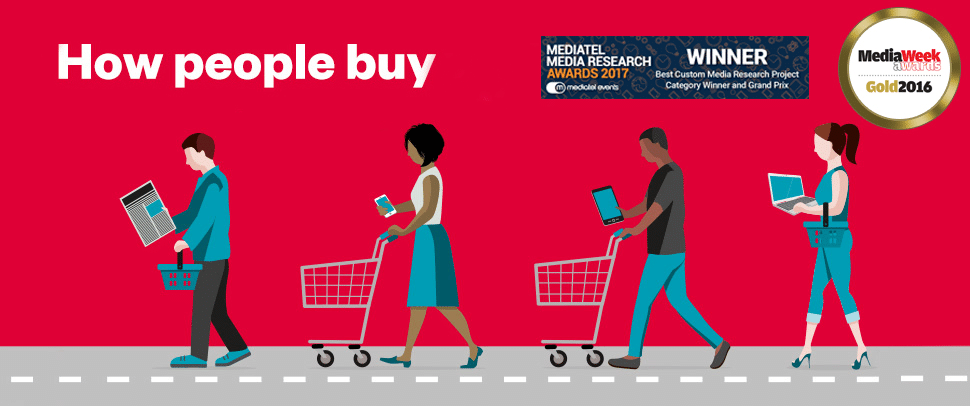An investigation into the consumer decision journey
Newsworks’ research, conducted by Flamingo and Tapestry along with behavioural economics expert Dr Nick Southgate, examines the consumer decision journey, with a focus on the roles of different media channels along the path to purchase. The findings have been developed into an interactive planning tool, to help you choose the right channels to move people along the purchase journey and ultimately to drive sales.
The way people buy brands and products these days is complex. We also know that decision-making is often irrational, with device-laden consumers having access to information 24/7, and that peer influence is increasingly important.
It is in this context that people are reframing how they represent and discuss the consumer decision journey. One particularly useful description is that of a pinball machine – there is a trigger that causes people to enter the decision-making process, but once in, they bounce from one touchpoint to another, often moving backwards as well as forwards, before eventually making a decision.

Against this background, Newsworks partnered with Flamingo, Tapestry and Dr Nick Southgate to explore the types of purchase journeys people make, the stages in those journeys and the roles of media in influencing those journeys.
Key findings
- Consumer journeys are more about eliminating risk and making a “good enough” decision than they are about making the perfect choice
- People are always on a journey to buying something, gathering ideas about brands and things to possibly buy one day. Passive absorption of brand associations before a decision journey is a powerful method of influencing purchases
- The journey is about reducing worry. At the start of a buying journey, people are anxious about making a mistake and confidence only rises towards the end of the decision-making process
- Most journeys consist of an assumed front-runner, which will be cross examined through various touchpoints to ensure its purchase won’t be regretted
- Brand preference provides more confidence: for example, people who have one brand in mind before they start the journey towards a car purchase are less worried at the start (39% compared with 54% for people who have no brand in mind) and ultimately more confident they have made the right choice (63% vs 41% for people who started with no brand in mind)
- Newsbrands act as a lens on the world, reinforcing values and helping people determine what matters and what to spend time thinking about – whether that’s a purchase decision or politics and culture
- 85% of people say that seeing a brand or product in their newsbrand “gives me more confidence that it’s right for me”
- Different channels work together to produce a ’double whammy’ that disrupts purchasing habits – newsbrands’ role is often to provide the detail that confirms brand and product relevance
What we did
The research project consisted of four stages:
- Explore: A nine day experiment among eight newsbrand readers using wearable glasses to capture touch points at different stages of the consumer journey
- Deep Dive: 11 filmed depths using a decision journey game-board to understand detailed interactions at all stages of a recent purchase
- Consolidate: applying a Behavioural Economics filter to inform the quantitative stage
- Expand: An online survey among 2,000 adults aged 18-65 who ever read newsbrands (90% of the total number for that audience), to quantify the role of media touchpoints along the stages of the journeys
Four journey types
We explored four types of journey – short new: everyday purchase such as grocery retail; short normal: everyday purchase; medium: where the purchase cycle is likely to be every one to two years e.g. mobile phone handset; and long: where the purchase cycle is measured in years, likely to be five or more e.g. car (although 38% nevertheless say their choice was an “impulse purchase”.)
For bigger purchases/longer purchase journeys, two-thirds of people are choosing between two brands. Of those who have just one brand in mind, seven in 10 of them do not even try another brand. Those ongoing seeding of brand ideas are so important. Byron Sharp calls it the mental availability of brands.
There is not necessarily a strong correlation between size of purchase and the level of planning that goes into it. Even bigger purchases, where thousands of pounds change hands can be impulsive.
Seven key stages
We identified seven key stages in the consumer purchase journey. The path to purchase is no longer a simple funnel, where the consumer moves in a linear fashion from initial interest, to selecting a shortlist, to buying a product. But there are clearly defined needs along the way – and media can help satisfy those needs.
Being
Everyday life, before they even began thinking about buying the brand
Build up
The very start, beginning to think about buying a brand/product and how to do it
Expand
Getting a sense of the different options and seeing what’s out there
Filter
Choosing the exact brand/product they want
Test
Try out the brand/product in person to make the final decision
Buy
Finding and buying the brand/product they have chosen
Experience
Experiencing the brand/product after purchase
10 key roles for media (paid, owned and earned)
One of the most important roles for media is to Frame, which happens before a purchase journey even starts, at the Being stage. People are semi-consciously absorbing information on the products, brands and retailers that are out there and worth paying attention to. Media’s role is to prime people to notice brands when out and about (mainly short journeys), define the assumed category consideration set (longer journeys) and create a strong sense of excitement and anticipation.
During the journey itself, there are seven roles that media brands play to help people making the buying decision.
And the influence of media doesn’t stop at purchase, there are two further roles that media play post purchase, Share and Enjoy. Given the fact that a significant number of people are still worried once they have made the purchase, the role of media in generating satisfaction and confidence is vital.

Finally we constructed a consumer journey planning tool to help planners navigate the complexities of different journey types, the stages of those journeys and the influence of different paid, owned and earned touchpoints on the decision-making process. You can find the tool here.

